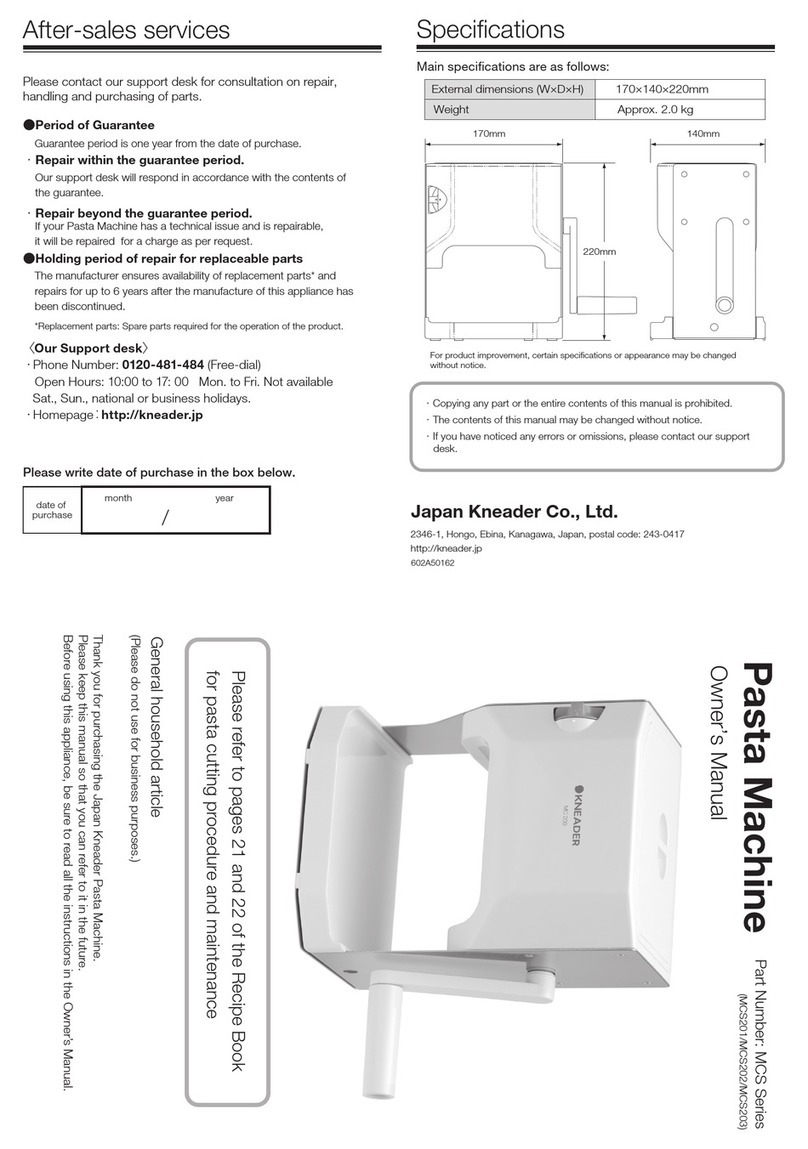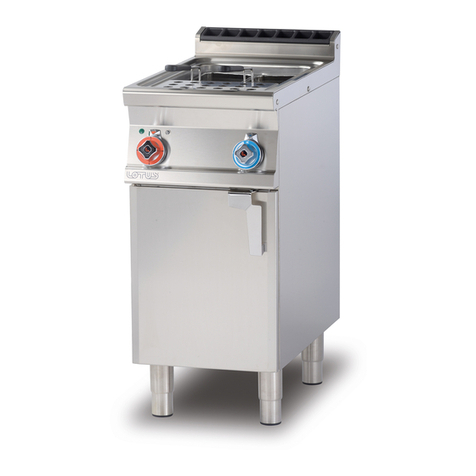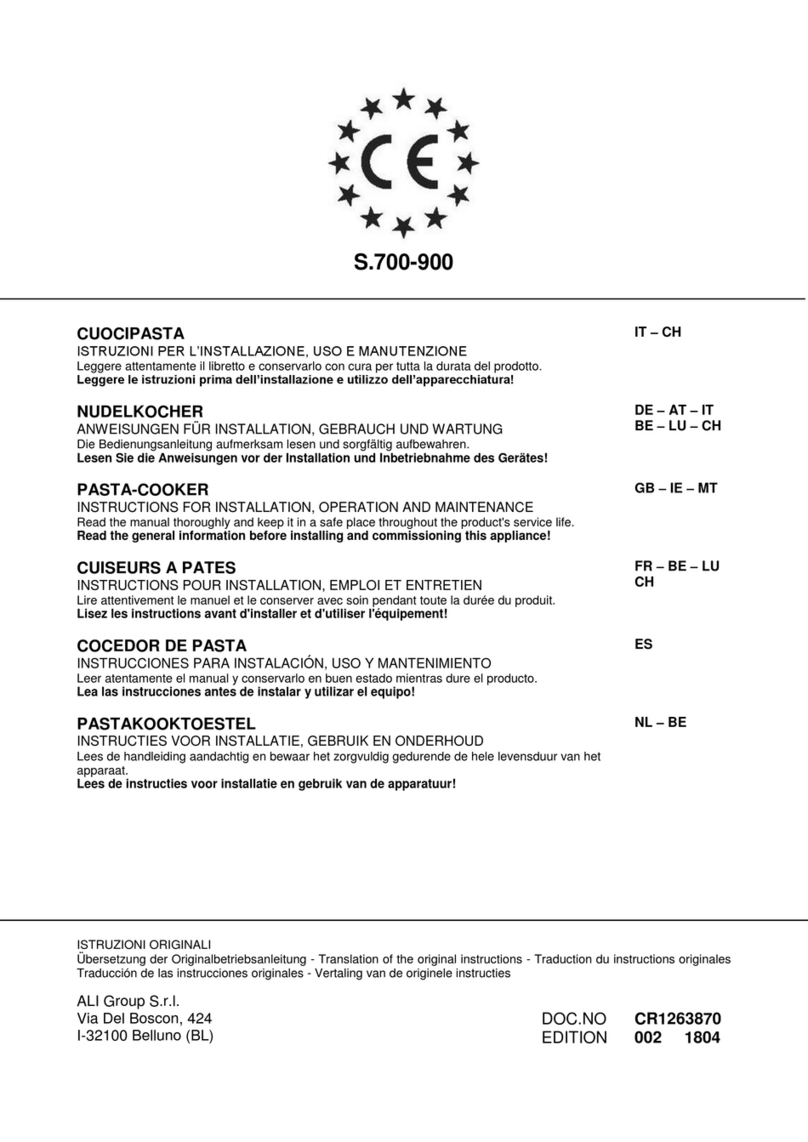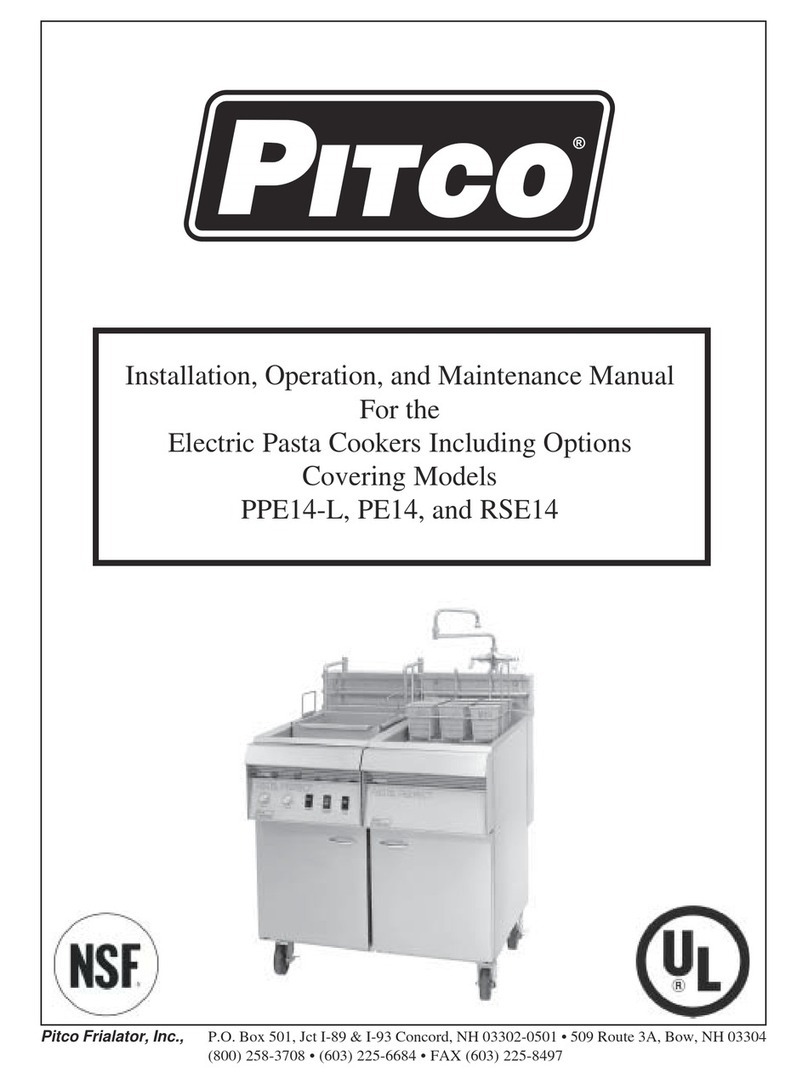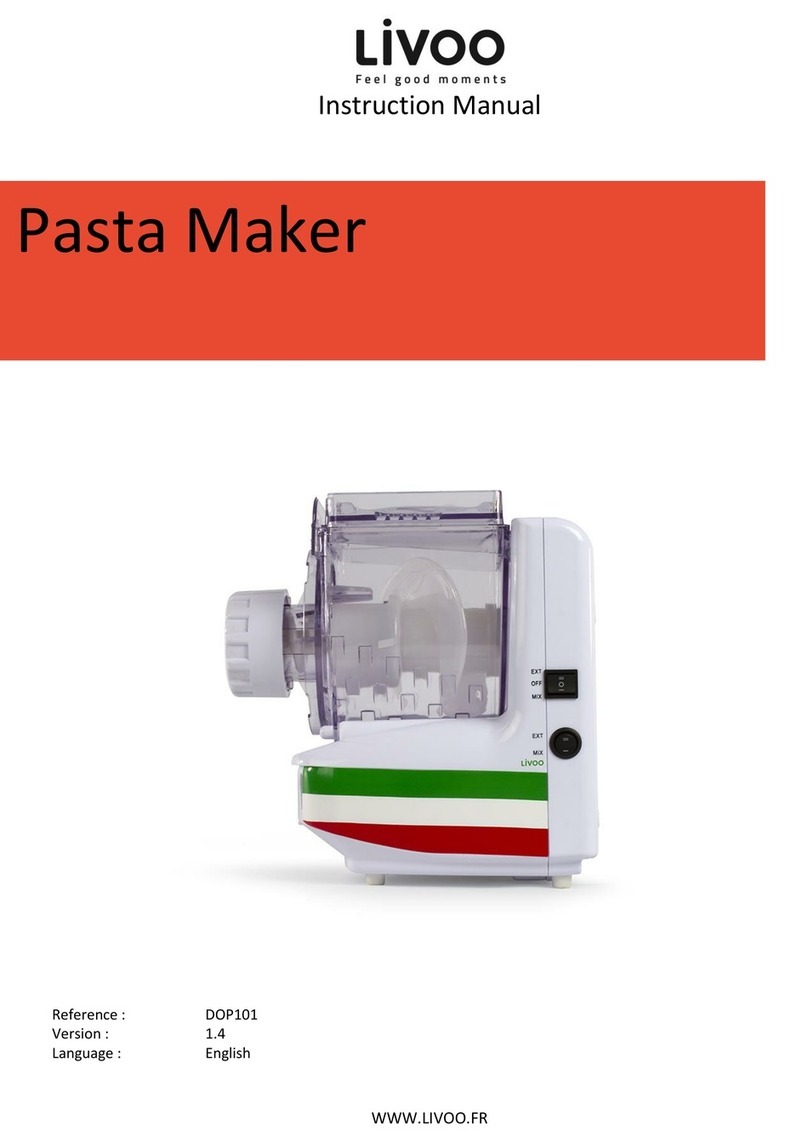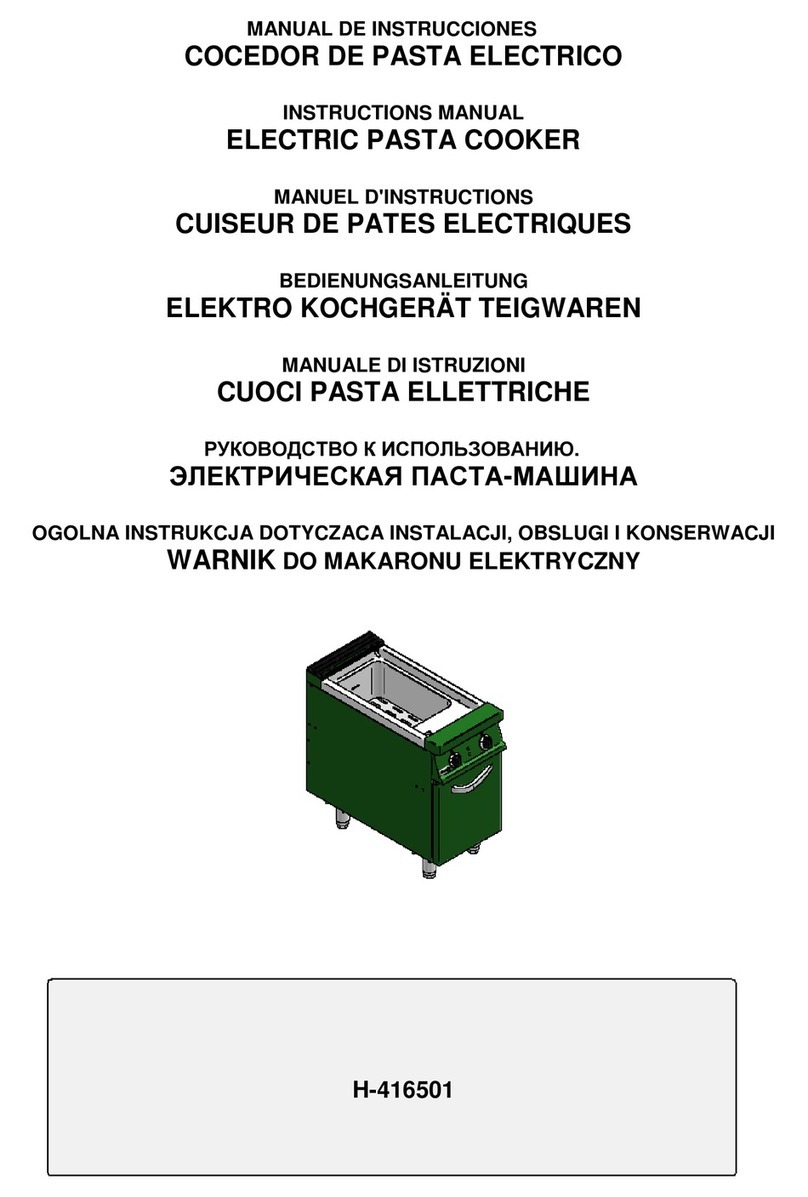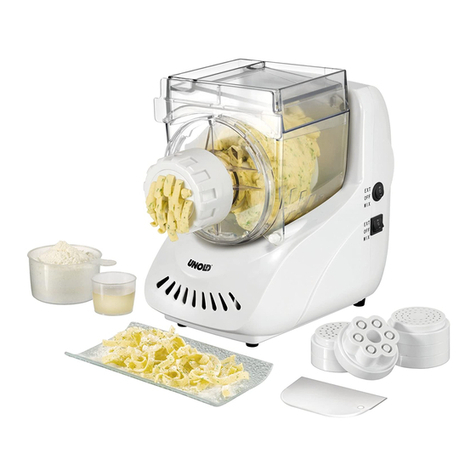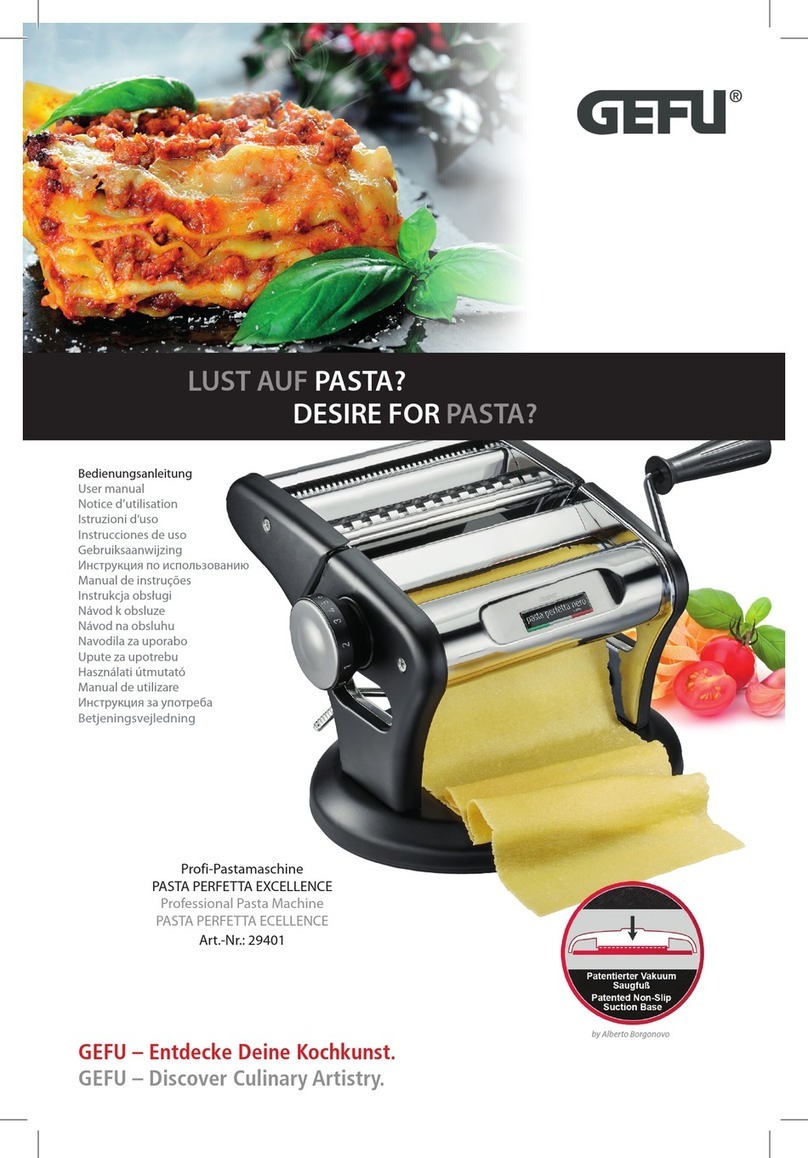
Problem
The device does not work.
Kneading spiral does not rotate evenly or
the pasta dough is expressed unevenly/
with interruptions from the pasta
attachment.
The locking cannot be undone.
The pasta dough only emerges very
slowly from the outlet openings of the
pasta attachment.
The connecting piece cannot be inserted.
The kneading spiral suddenly stops
during use.
• Is the On/O switch in the OFF position ? move the On/O switch to MIX or
EXT.
• Is the selection made on the function switch the same as that on the On/O
switch ? The switch positions of the two switches must match (MIX or EXT).
• The mixing container lid is not placed on correctly. Open the mixing container
lid again and insert the rear tab into the recess on the motor unit. Lower the lid
and close it so that the locking clip locks in place. The pin on the back edge of
the lid must activate the safety switch in the motor unit.
• Is the plug inserted in the mains socket correctly?
• Is the mains socket defective ? Try another mains socket.
• Check the fuse of your mains connection.
• Too much pasta dough. Switch the device o and pull the mains plug from
the mains socket. Remove some pasta dough from the mixing container and
then continue the kneading process.
• The pasta dough is too dry. Add some liquid, e.g. water or olive oil, to the
dough.
• Move the function switch and then the On/O switch to the MIX position and
then allow the device to run for a few seconds. Move the On/O switch to the
OFF position and then try to undo the locking ring again.
• Check the consistency of the dough. The dough must not be too moist or
too dry. The dough should have a granular consistency with roughly pea-
sized little lumps of dough. Add more water or more our to the dough if
necessary.
• Check whether any dough residues have become stuck to the connecting
piece or on the mixing container. If they have, remove them and then try
again.
• The connecting piece must be inserted in such a way that the circular mark
on the connecting piece is opposite the upper circular mark on the mixing
container. Only then can the connecting piece be inserted into the mixing
container up to the limit stop and then be locked by turning it clockwise.
• Is there too much pasta dough in the mixing container?
Switch o the device, take o the mixing container lid and remove some of
the pasta dough from the mixing container. Then switch the mixing container
and the device back on again. We recommend that you process larger
quantities of dough in several operations.
Possible cause / solution
9. BASIC RECIPE FOR PASTA DOUGH
Also follow the notes in the “Assembly” and “Use” chapters before you start making pasta.
For the pasta dough, you can use both normal household our as well as wholegrain our or
our made from durum wheat semolina. The pasta dough can be made both with and without
egg. In general, no limits are placed on you when it comes to making pasta. However, you
should always ensure when making pasta that the dough should be evenly kneaded, slightly
moist and granular before you extrude it. The dough should have the consistency of pea-sized
little lumps of dough which are not too dry or too moist.
10




